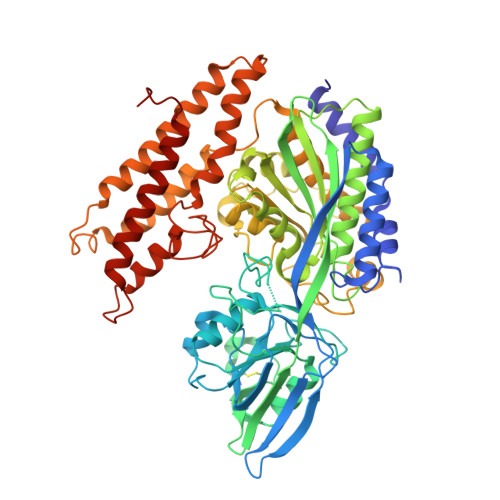Structural basis for receptor recognition by New World hemorrhagic fever arenaviruses.
Abraham, J., Corbett, K.D., Farzan, M., Choe, H., Harrison, S.C.(2010) Nat Struct Mol Biol 17: 438-444
- PubMed: 20208545
- DOI: https://doi.org/10.1038/nsmb.1772
- Primary Citation of Related Structures:
3KAS - PubMed Abstract:
New World hemorrhagic fever arenaviruses are rodent-borne agents that cause severe human disease. The GP1 subunit of the surface glycoprotein mediates cell attachment through transferrin receptor 1 (TfR1). We report the structure of Machupo virus (MACV) GP1 bound with human TfR1. Atomic details of the GP1-TfR1 interface clarify the importance of TfR1 residues implicated in New World arenavirus host specificity. Analysis of sequence variation among New World arenavirus GP1s and their host-species receptors, in light of the molecular structure, indicates determinants of viral zoonotic transmission. Infectivities of pseudoviruses in cells expressing mutated TfR1 confirm that contacts at the tip of the TfR1 apical domain determine the capacity of human TfR1 to mediate infection by particular New World arenaviruses. We propose that New World arenaviruses that are pathogenic to humans fortuitously acquired affinity for human TfR1 during adaptation to TfR1 of their natural hosts.
Organizational Affiliation:
Laboratory of Molecular Medicine, Harvard Medical School, Boston, Massachusetts, USA.




















